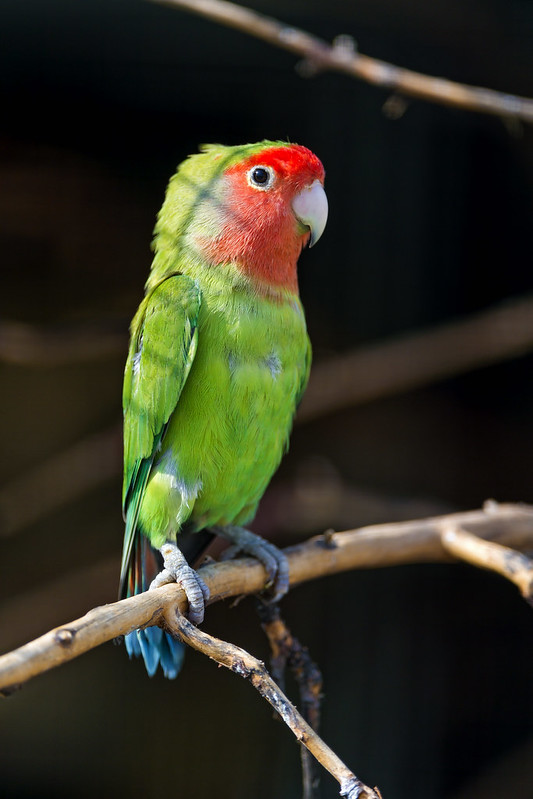 |
| Lovebirds - Photo by ferran pestaña |
It would not be tough selecting a Lovebird among these selections. Lovebirds differ in size and are the smallest parrots in the world. They have a squat build, short blunt tail, and an unusually large beak for their small bodies. They are regularly green with varying colors on their heads depending on their type. Some of their species are known to have an impressive white-ringed-eye, among them, are the Fischer's Lovebird, Black-cheeked Lovebird, and the Masked Lovebird.
There are also species that are sexually dimorphic, they are the Abyssinian Lovebird, Madagascar Lovebird, and the Red-faced Lovebird. It has been extremely popular in the aviculture the many varying mutant colors that have been produced by selective breeding. This only verifies that you have a huge range in selecting a Lovebird. Be certain that the Lovebird you select is bred in captivity.
In picking a Lovebird, you need to remember the likely implications it'd bring in breeding different species of Lovebirds because there are certain probabilities that they fight and might finish up slaughtering each other as these incidences have occurred in the history of keeping Lovebirds. Because of their different appearances, they can be mistaken for other species of Lovebirds as an enemy. Always thinking that another male species is a competitor to a possible partner.
Also, you have to put on your list of needs in picking Lovebirds is their diet and well being. They eat fruits, but not avocados as they are deadly to them, vegetables which are best cooked, nuts, grains, eatable blossoms and flowers, cereals, sprouts and pellets that are formulated for them is a good addition.
Selecting cages should also be one of the things you have in mind when choosing a Lovebird, cages should be the right size, which means it should be spacious enough for Lovebirds as they adore to fly. Apart from flying, Lovebirds also like to chew on things, so much so they are like rubbish makers, so before selecting a Lovebird, you must make certain you have loads of patience, that will tolerate anger amongst the adorable Lovebirds.
Before choosing to have a Lovebird as a pet, be certain that you have the patience, time, and lots of space. If you don't have the room, then taking on a Lovebird may not be the best idea for you. They do need loads of room so they have the spaciousness required to fly.
Lovebirds need regular interaction. Also, they should have quite a few toys - this is an important item to have on your list of needs for your lovebird. Without these distractions, they are going to become bored and stressed which can lead to a tantrum (a bit like a tiny kid) and that can be tough to deal with.
Elise Gonzalez is a lovebird expert. Do You Want To Know How To Take Care Of Your Lovebird? Build Great Friendship With Your Bird? Discover more information about Picking A Lovebird, visit http://www.lovebirdscaresecrets.com. Article Source: EzineArticles |





